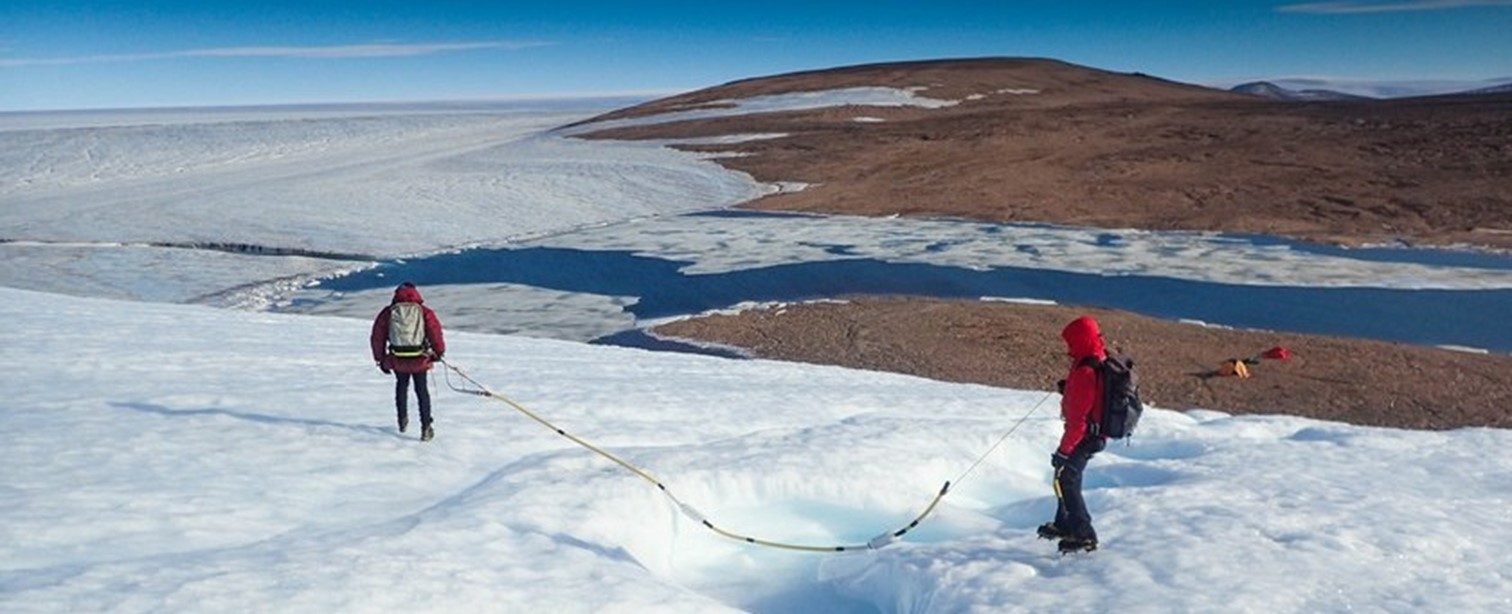Greenland’s ice masses form the second largest ice reservoir on earth after Antarctica. Although 85 percent of the land area is still iced over year-round, man-made climate change has been gnawing away at the ice sheet for years. The amount of ice melting in Greenland is of enormous importance in terms of sea level and global climate development. As part of the project “WEG_Re – Centennial Climate Drivers of Glacier Changes in Greenland”, research is now being carried out as to how far glacier changes and climatic drivers are connected. The project is funded by the Austrian Science Fund FWF and consists of an interdisciplinary team of researchers at Know-Center, the University of Fairbanks and the Geological Survey of Denmark and Greenland (GEUS), led by glacier researcher Jakob Abermann of the University of Graz.
Climatological bridge over 100 years
“If you want to realistically reconstruct the past or model the future, a longer time perspective is essential. While observed time series on how atmospheric conditions are affecting the glacier surface exist, they are limited to recent decades,” data expert Andreas Trügler of Know-Center states, explaining the initial situation.
The research project is based on archival data collected by scientist Alfred Wegener in the early 1930s. During his expedition, climatological and glaciological data were collected, which are uniquely documented and available in the archives of the University of Graz in a temporal resolution that proves unique for that time.
From a climatological point of view, the comparison of old and new data is particularly interesting since Greenland experienced a warm phase in the 1920s and 1930s, alike the one we have today, but with less severe human influence on the global climate.
Almost a century later, researchers want to observe the same parameters over a period of three years at the exact same measurement locations and under similar atmospheric conditions. “What is changing, however, is that the monitoring is carried out using modern methods and the evaluation is supported by artificial intelligence and statistical modelling,” Trügler says.
AI determines interaction between glacier and atmosphere
Supported by helicopter, the research team will place autonomous measuring stations on the ice, which will record the climatic conditions on site for three years. The geometric conditions of the area studied are representative for large parts of Greenland, making the results transferrable.
“We use artificial intelligence methods to fill gaps in existing data sets on the one hand and to gain new insights into the local feedback mechanisms between glaciers and the atmosphere on the other. Data originated from a drone equipped with meteorological sensors, and dynamic ice models, help to achieve the most complete picture possible of changes in the glacier surface and the atmosphere,” Trügler says, describing the procedure.
Involving the local population
The involvement of the Greenlandic population poses an important component of the project. Local agents will support the project in questions of transport logistics, in addition they will be frequently checking the measuring stations once the project team has returned to Austria after three weeks. It is planned to present the results on site to the neighboring settlements once the project has been completed.
Further information: https://weg-re.at/
